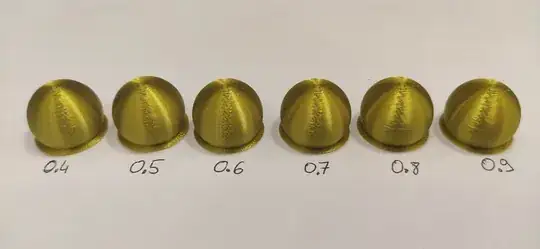Everywhere you can read how to try to "hide" the seam, but nowhere there is an attempt to eliminate this problem.
And the proof that it is possible is the prepared G-code added to the Ender printer on the SD card. (the exact name of the file is 3-Cat.gcode)
This little figurine has no seam at all! The print is so perfect that I can't believe it.
The question is why slicers don't create such G-codes so that the seam is hidden inside the printed object, not on its wall.
I have printed this figurine six times already, in different colors and different brands of filament. All prints are perfect!
What do you think about it? Can this be done in a slicer? (I can add this file somewhere but I don't know where.)
Seam in diferent retraction distance (retract on layer change turned on):
